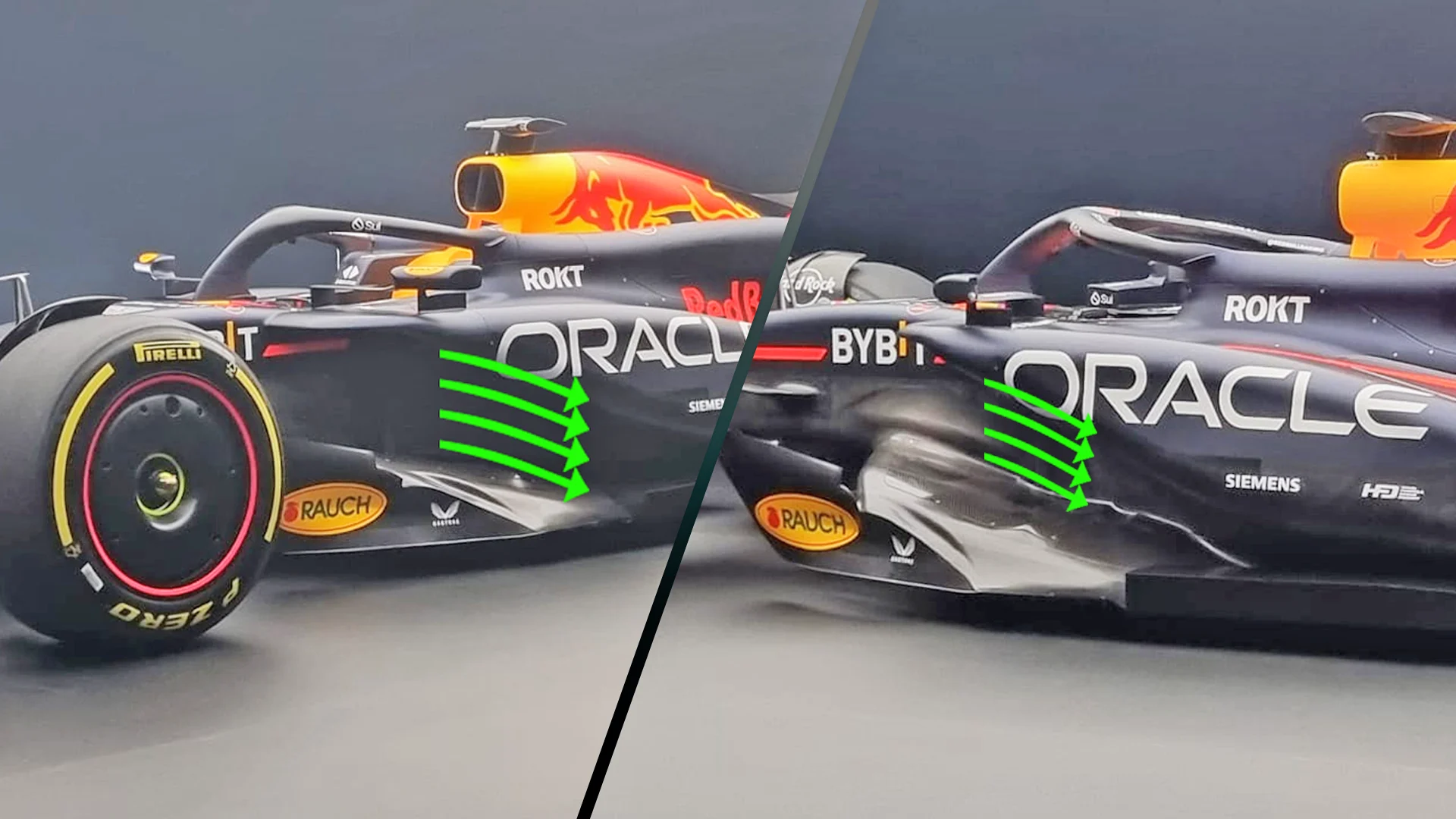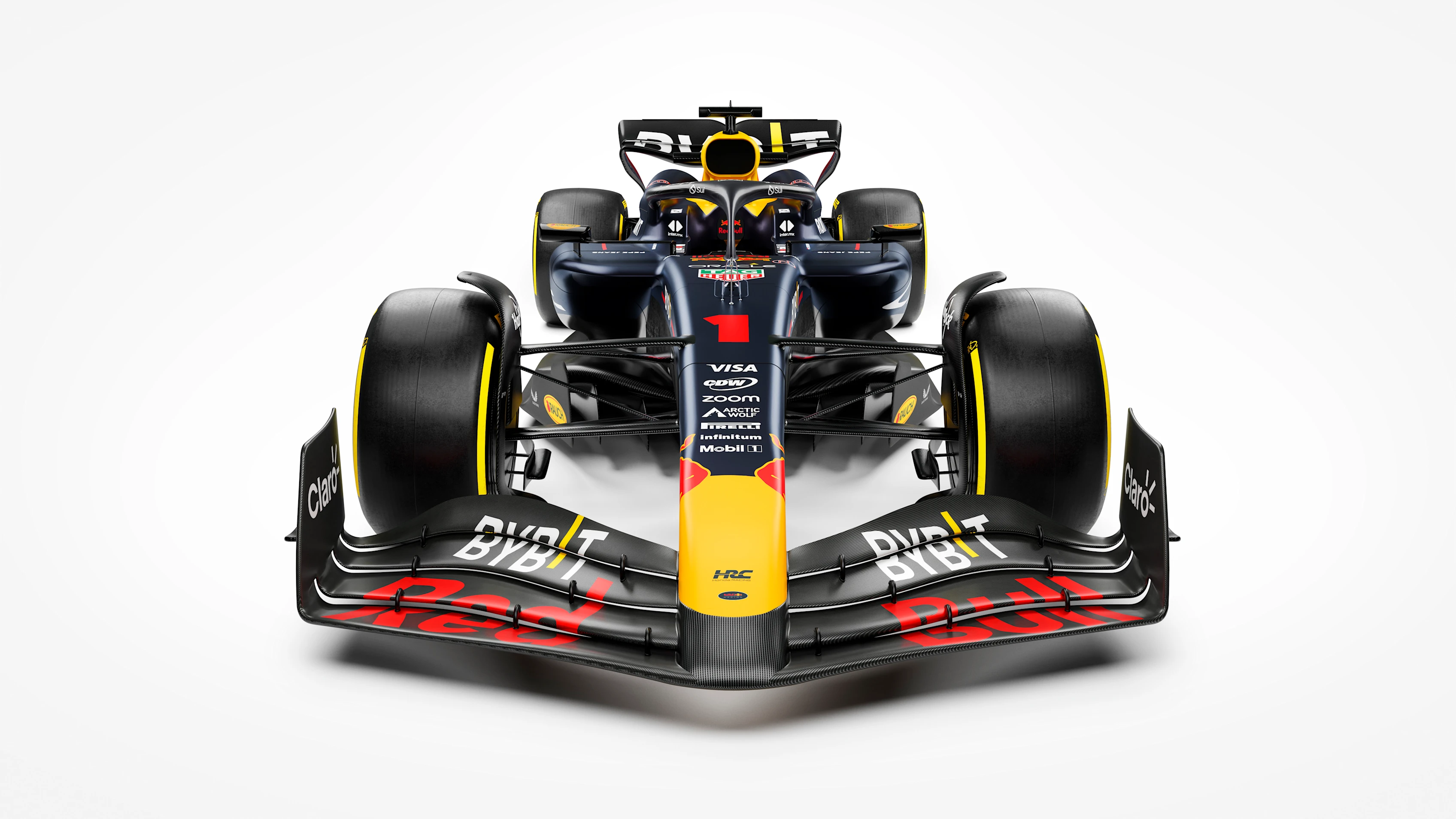TECH ANALYSIS: Why Red Bull’s aggressive RB20 is likely to have alarmed their F1 rivals


Anyone expecting Red Bull to have made relatively few changes to the car, which last year broke all records of success in F1 history, should have known better. The RB20 is a very aggressive looking upgrade, one which departs from the bodywork trends the team initiated back in 2022.
Just as everyone has converged towards what Red Bull came up with in the first year of these regulations, so Red Bull has taken what appears to be a big evolutionary step.
GALLERY: Check out every angle of Red Bull’s new F1 car, the RB20
The most distinctive part of all in a design which seems to have minimised surface area all round is the upright radiator inlet which sits tight inboard and running to the bottom of the chassis.
In shape, the inlet actually looks similar to that of the original zero sidepod Mercedes of 2022, but it’s being used in quite a different way. Whereas the old Mercedes used the vertical inlet shape to pare the sidepods away, Red Bull has retained the sidepods and used the vertical inlet to give them a truly enormous undercut at the front.

It appears to be a quite different aerodynamic philosophy, not just from the old zero-pod Mercedes but also from Red Bulls of the last two years.
Advances in radiator technology are allowing those coolers to be ever-smaller for the same heat-rejecting capacity. This, together with Red Bull’s ability to intricately shape the radiators into beautiful compound curve shapes so the surrounding bodywork can be shaped for maximum aerodynamic effect (seen already in last year’s RB19), has allowed the radiators to be sited lower in the RB20.
READ MORE: Perez hails ‘brave’ Red Bull for inspired car development ahead of 2024 season
The radiator area previously high up around the centreline has been moved lower, not only reducing the centre of gravity height but also allowing the team to fundamentally re-assess the optimum layout of the whole car.
Matching the reduction in height of the radiators, the inlet is also sited lower, now sitting beneath a bodywork lip rather than above it. But siting a horizontal inlet lower would have stolen valuable space for the undercut (which speeds up the airflow along the floor edges towards the outer body of the floor’s diffuser). Moving to a vertical shape has allowed both a lower inlet and an enhanced undercut.

The route of the cooling air taking heat away from the radiators to the rear of the car is suggested by the very high bodywork shoulders, which form a depression between them and the engine cover (another similarity to the ’22-23 Mercedes). The sidepods beneath are almost classic aerofoil in profile and far less bulky than before.
In addition to the changes to the cooling layout, the re-siting and miniaturisation of the radiators has also allowed the rear upper bodywork to be very short, ramping down at a sharp angle, creating lots of volume ahead of the rear wing. That short length is matched by the sidepod, creating more volume there to enhance airflow around the diffuser.
EXCLUSIVE: Red Bull’s Pierre Wache on the team’s 2024 – ‘We didn't do an amazing job last year’
This radical reworking of the upper bodywork are all in service to maximising the performance of the component we cannot see – the underfloor. With a more powerful airflow around the sidepods and along the floor edges, the geometry of the venturi tunnels will have been re-optimised – something which will surely strike dread in the opposition ahead of the season.
Next Up
Related Articles
 Verstappen confirms new number for 2026 season
Verstappen confirms new number for 2026 season Tremayne'Why I’ll always have a soft spot for Sauber'
Tremayne'Why I’ll always have a soft spot for Sauber' Celebrating the first F1 Allwyn Global Community Awards
Celebrating the first F1 Allwyn Global Community Awards Piastri reveals lessons that will ‘only make me stronger’
Piastri reveals lessons that will ‘only make me stronger’ EXPLAINED: The key terms for F1’s new-for-2026 rules
EXPLAINED: The key terms for F1’s new-for-2026 rules Lindblad's car number confirmed for rookie season
Lindblad's car number confirmed for rookie season